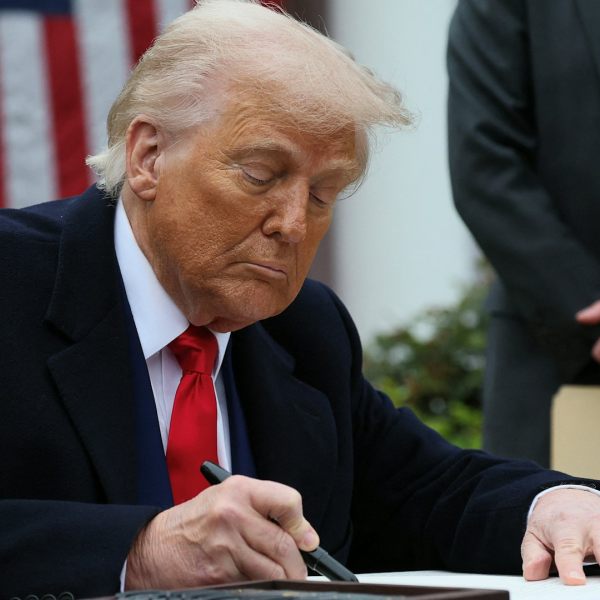Mt. Gox delayed to 2026: Does 34k BTC even move Bitcoin price anymore?
Mt. Gox just pushed its repayment deadline again from this Friday to Oct. 31, 2026, with court approval.
The one-year extension, effectively diffuses near-term sell pressure, turning what could have been a sharp supply event into another drawn-out administrative cycle. Much like prior phases, repayments are expected to filter through exchanges, custodians, and OTC venues in waves rather than floods, muting immediate market impact.
For Bitcoin, this delay extends the overhang narrative but also underscores that Mt. Gox distributions remain a slow bleed, not a single catalyst capable of shaking the broader market structure.
The deadline was already pushed from last October and now its happened again.
Why are Mt. Gox payments being pushed back another year?
The trustee cited incomplete creditor procedures and processing issues as the reason for moving the completion dates for base, early lump sum and intermediate repayments from Oct. 31, 2025, to Oct. 31, 2026, shifting an expected supply overhang out by a full year, per the official notice. Bitcoin traded near $114,874 at press time.
The date change converts a calendar overhang into a process overhang. A sizable portion of creditors still need to complete exchange and custody steps, and prior tranches showed that payouts feed through exchange queues, custody releases and banking rails over extended schedules.
Historical processing windows ran up to about 90 days at Kraken, roughly 60 days at Bitstamp and about 20 days at BitGo, so even when the trustee releases funds, conversions and potential sales can disperse across months rather than a single session.
Public trackers continue to place the residual estate near 34,700 BTC, although the on chain totals fluctuate with internal movements.
Scale context now differs from earlier cycles. Bitcoin ETFs have pulled in a cumulative $61.98 billion in inflows since launch and $4.2 billion in net flows in October alone.
At roughly $115,000 per coin, that montly Bitcoin intake equates to around 36,000 BTC, comparable to the entire remaining Mt. Gox stack. That is not a base case absorption path, however it frames the order of magnitude of regulated demand relative to the overhang.
Depth in listed derivatives also expanded into the autumn.
CME Group data shows that crypto futures and options set all time highs in the third quarter, including record notional open interest of $39 billion on Sept. 18 and average dollar open interest of $31.3 billion for the quarter.
More inventory hedging, basis trading and options activity means more capacity to intermediate episodic spot flows through delta hedging and cross venue arbitrage. That plumbing gives dealers and arb desks more room to warehouse Mt. Gox related supply without forcing disorderly prints in spot markets.
Spot ETFs remain a central part of the absorption picture. BlackRock’s IBIT fund sits at $89 billion in assets, an individual product that now rivals the entire residual Mt. Gox inventory many times over. Persistent creations during dips, plus the ability to route coins via authorized participants and market makers, create a structural buyer that did not exist in 2021.
If ETF creations reach even a fraction of the early October pace, the market impact of staggered creditor selling can be converted into liquidity events that are intermediated across ETF, futures and spot.
Issuance sets a further baseline.
Following the April 2024 halving, miners add about 450 BTC per day, or roughly 164,250 per year. That annual flow is more than four times the remaining Mt. Gox stack. While issuance does not determine price on its own, it provides a scale yardstick for how much new supply the market already absorbs under normal conditions.
The relevant risk calendar now stretches through 2026. Tax timing can bunch discretionary sales, especially around year end and filing deadlines.
US taxpayers close the calendar year on Dec. 31, with estimated tax cadence in mid January, while UK online self assessment returns are due Jan. 31, and Japan’s filing and payment deadline is March 15. These dates can motivate lot harvesting or selling to cover liabilities.
Quarter and year end rebalancing adds another layer, where ETF books, dealer hedges and CME expiry cycles can compress basis and amplify two way flows around month and quarter turns.
Macro remains the swing factor. The Bank of Japan board turned more hawkish into late September, keeping the probability of a rate move or direct currency intervention on the table.
The BIS documented how the August 2024 yen carry unwind drove cross asset deleveraging, with crypto included in the shock. A similar funding squeeze in 2026 would overshadow trustee wallet moves by forcing balance sheet reductions across risk assets, which is the larger negative tail for bitcoin than the Mt. Gox distribution path.
A simple scenario frame can help map scale to plausible outcomes, using 34,689 BTC as the starting overhang and $115,174 dollars as the spot anchor:
| Low trickle | 25% | 8,672 | ~$1.00B |
| Base case | 50% | 17,345 | ~$2.00B |
| High case | 80% | 27,751 | ~$3.20B |
The takeaway is a sizing tool that compares the overhang to a week of robust ETF intake and a year of post halving issuance.
If realized sales are staggered and routed through exchanges, OTC desks and custody withdrawals across the processing windows already observed, market structure offers more avenues to intermediate the flow.
If sales cluster around tax dates, quarter turns or macro shocks, price impact can rise as basis compresses and liquidity thins.
Creditors also receive Bitcoin Cash, and BCH order books are thinner than BTC.
The dollar notional at issue is much smaller, yet relative price sensitivity can be higher in BCH during payout windows, per the trustee’s repayment notices.
Monitoring will focus on the trustee’s official page, on chain labels for Mt. Gox entities to distinguish exchange bound transfers from internal shuffles, US spot ETF creations and redemptions, CME basis and open interest, and BOJ policy releases for any yen intervention or rate steps.
The calendar shift does not remove supply risk, it changes its cadence.
The reference points now are tax and rebalancing windows in early and late 2026, CME expiry clusters and any BOJ move that pressures the yen carry.
The trustee’s new deadline sets the next checkpoint at Oct. 31, 2026.
The post Mt. Gox delayed to 2026: Does 34k BTC even move Bitcoin price anymore? appeared first on CryptoSlate.
Disclaimer: The content of this article solely reflects the author's opinion and does not represent the platform in any capacity. This article is not intended to serve as a reference for making investment decisions.
You may also like
The Next "Black Swan": "Tariff Refund Mega Deal", Wall Street and Individual Investors Are Placing Bets
Individual investors are participating in this game through emerging prediction markets such as Kalshi and Polymarket.

Since the U.S. legislation in July, stablecoin usage has surged by 70%!
After the "Genius Act" was passed in the United States, stablecoin payment volumes surged, with August transactions exceeding 10 billion USD. Nearly two-thirds of this amount came from inter-company transfers, making it the main driving force.

BlackRock Shifts $500 Million Funds to Polygon Network
In Brief BlackRock transfers $500 million to Polygon, enhancing blockchain integration in finance. The move shows increased trust in blockchain-based financial structures. It indicates a trend towards decentralization and long-term structural change in finance.

XRP Eyes $27 Target After Breakout Confirms Multi-Year Bullish Pattern

